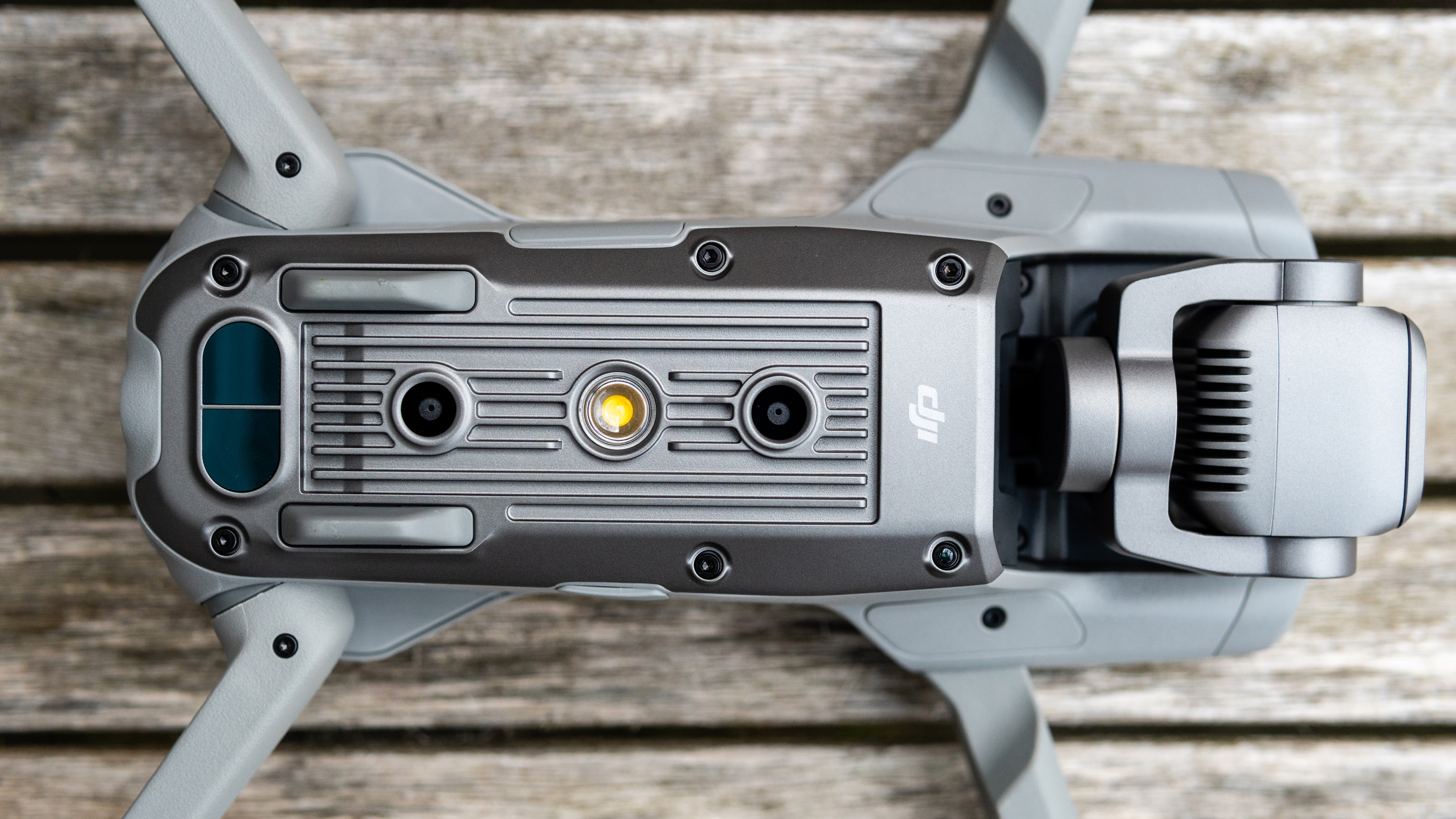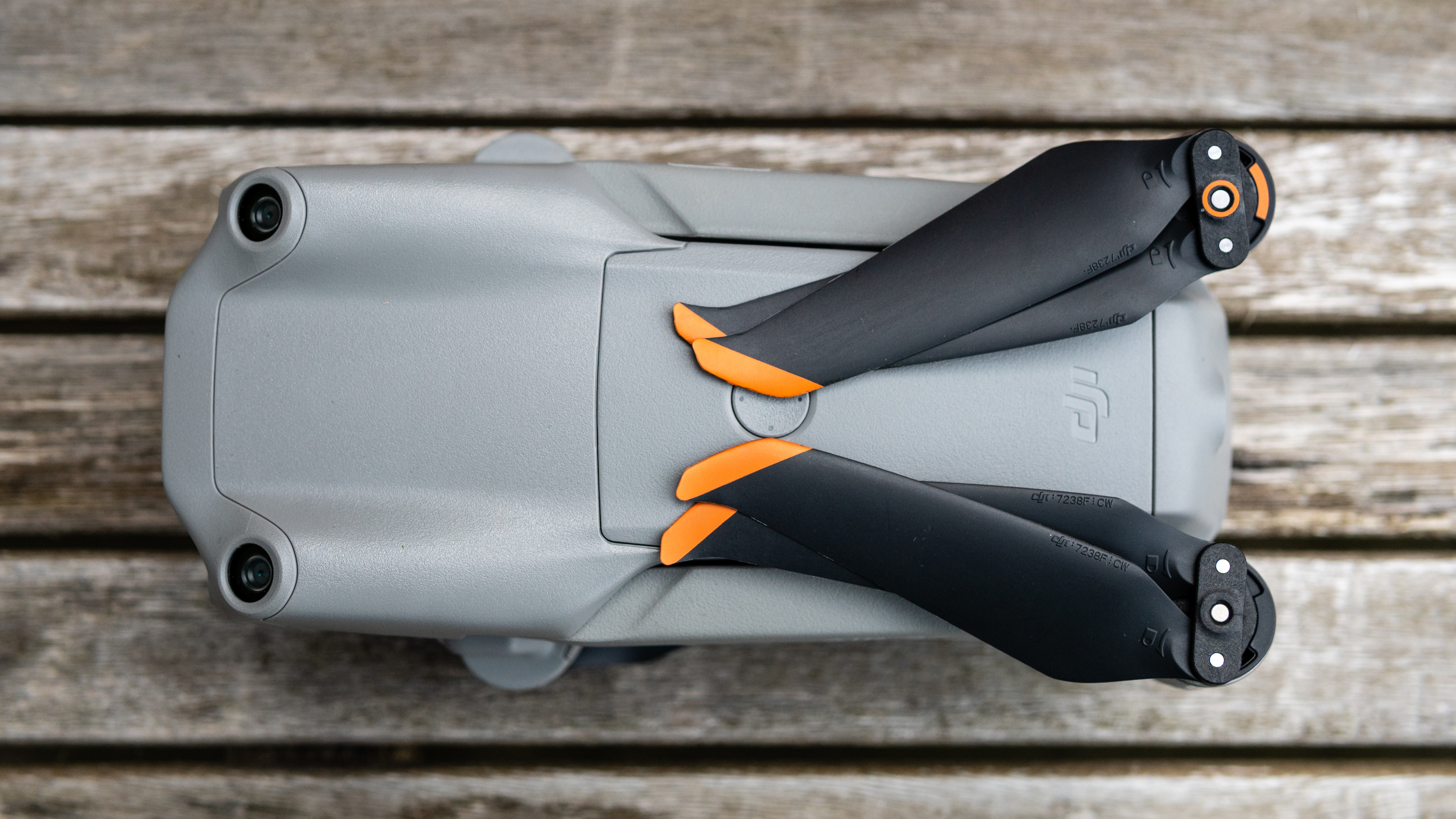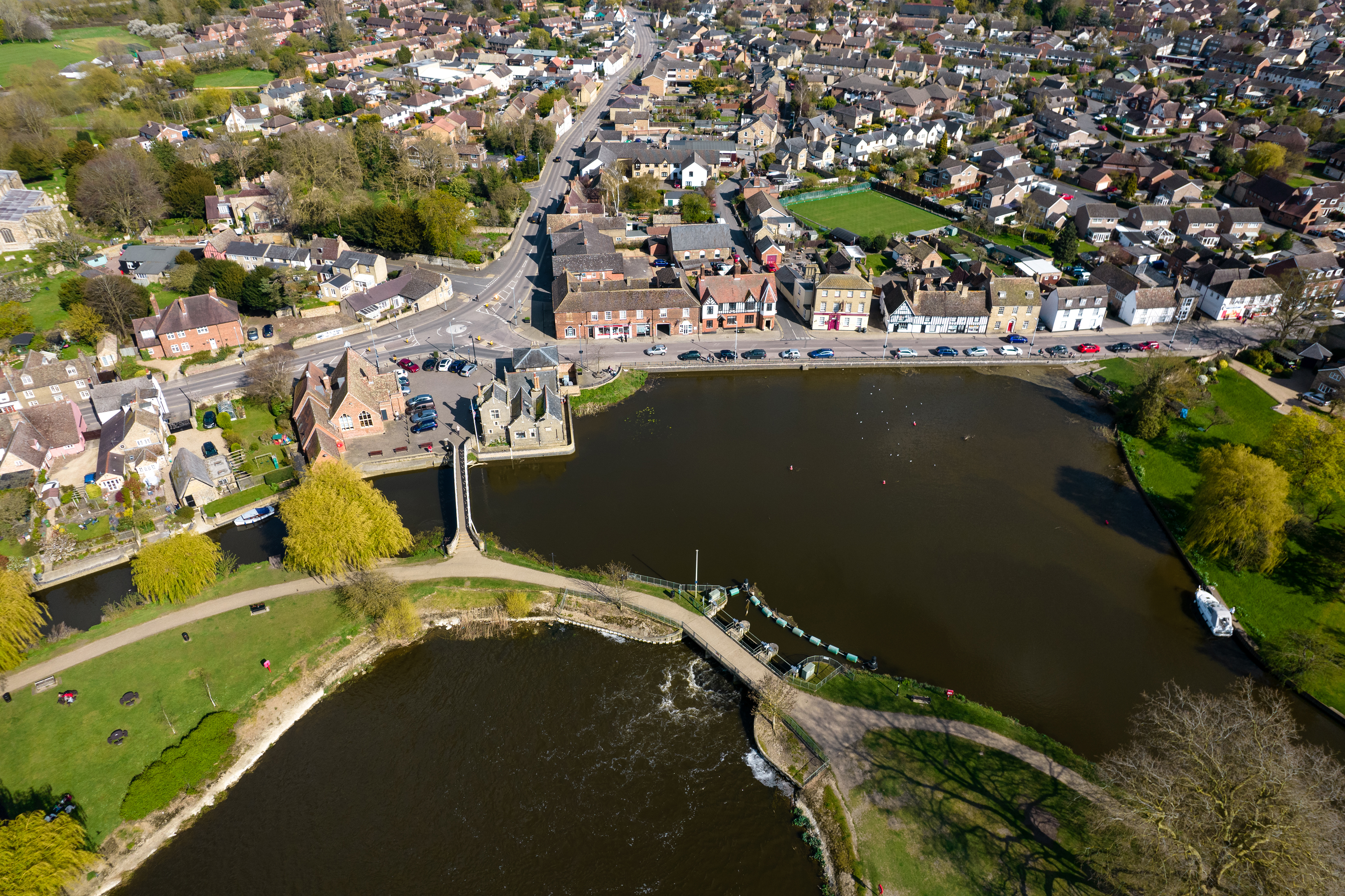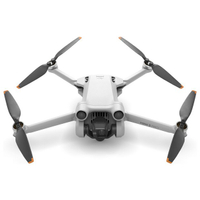TechRadar Verdict
The DJI Air 2S is no longer new, but it remains one of the best all-round drones you can buy. By combining the compact design of the DJI Mavic Air 2 and the Mavic 2 Pro's image quality, it's a great choice for anyone looking to shoot high-quality aerial videos and photos from a compact drone. The newer Mini 3 Pro is smaller still, but the Air 2S has a larger 20MP 1-inch sensor and squeezes that into a folding design that's still only 595g. While the Air 2S is slightly pricier than its predecessor, it's well worth the extra cost.
Pros
- +
1-inch 20 MP sensor
- +
Great image quality
- +
Small and lightweight
Cons
- -
Controller isn’t foldable
- -
Image edges slightly soft
- -
No adjustable aperture
Why you can trust TechRadar
Two-minute review
Despite the arrival of the smaller DJI Mini 3 Pro, the DJI Air 2S remains one of the best all-round drones you can buy. While its name suggests an incremental upgrade from the older Mavic Air 2, there are a lot of upgrades in the Air 2S for all kinds of drone pilots – including, most importantly, a 1-inch sensor that's been packed inside an impressively compact drone.
This 20MP 1-inch sensor is the Air 2S' headline feature and gives it a slight advantage over the Mini 3 Pro, which has a 1/1.3-inch sensor. Compared to the Mavic Air 2, you get improved image quality and a better high ISO response. The Air 2S also lets you shoot 5.4K video at 30fps, alongside 4K at up to 60fps, as well as 1080p at up to 120fps, which opens up significant creative potential for aerial videographers.
One of the main differences between the Air 2S and Mini 3 Pro is the size and weight of the respective drones. At 595g, the Air 2S is only 25g more than the Mavic Air 2, despite its improved cameras. However, the Mini 3 Pro is significantly lighter at 249g, which also puts it into a different drone class. In some regions, like Europe, the Air 2S could be subject to greater flying restrictions than the Mini 3 Pro, as it isn't a sub-250g drone and doesn't (yet) have one of the region's new CE class markings.

Price and release date
Design and controller
Features and flight
Video and image quality
Should I buy it?
Still, the Air 2S is packed with useful features that can help negate any drone law restrictions. For example, there's digital zoom, which starts at 4x with 4K at 30fps video and goes up to 8x zoom with 1080p at 30fps. This feature may not sound all that exciting, but with the laws that govern how close to people drones can safely fly (no closer than 50m, in most cases), it allows you to get close while maintaining that safe distance. For professional drone pilots, this could be an extremely useful feature, and for enthusiasts it will open the door to more creative stills and videos.
Image quality is also excellent overall, and the noise levels at high ISO settings are much better than those from the Mavic Pro 2. However, images are slightly softer at the edges and the aperture is fixed at f/2.8, so the only way to control exposure during video recording is with the use of ND filters.
Just like the Mavic Air 2 Fly More Bundle, the Air 2S Fly More Bundle also includes four ND filters, so we'd recommend going for that if you can. Overall, we think the Air 2S is still one of the best drones you can buy, thanks to its combination of a large 1in sensor and compact, travel-friendly dimensions. It isn't quite as small as the DJI Mini 3 Pro, which is also a superb drone. But if you're into aerial footage, it's one of the best video cameras you can buy now. Read on for our full DJI Air 2S review.
DJI Air 2S price and release date
- Announced 15 April 2021
- Standard kit costs £899 / $999 / AU $1699
- Fly More Bundle costs £1,169 / $1,299 / AU $2,099
The DJI Air 2S is available to buy right now from DJI's official store and many other retailers.
As is often the case with DJI drones, the Air 2S is available in a standard kit or Fly More Bundle. The standard kit consists of the drone, controller, one battery, propellers, a charger and all cables, and costs $999 / £899 / AU $1,699.
This is the same as its launch price, so it's definitely worth keeping an eye out for deals in the Black Friday deals and Black Friday drone deals. Given its age, it's seems likely that we'll see the Air 2S get some discounts during the sales season.

The Fly More Bundle is great value at £1,169 / $1,299 / AU$2,099, because along with getting everything in the standard kit, you also get two additional batteries, a three-battery charging hub, a shoulder bag and a set of four ND filters.
As always, the Fly More Bundle offers the greatest value for money because getting all of those extras separately would cost much more. Plus, pretty much everything in the bundle is essential, because one battery is never enough and, if you plan to shoot video, you will need ND filters to maintain control of shutter speed. As for the shoulder bag – well, you’ll definitely need something to carry your drone and accessories in, too.
We do often see Fly More Bundles receive discounts during the sales season, so look out for the Air 2S in the Black Friday DJI deals, either in DJI's own sale or at retailers.
DJI Air 2S review: design and controller
- The Air 2S weights just 595g
- It has a compact, foldable design
- Also has the same controller as the Mavic Air 2
On the outside, the Air 2S looks extremely similar to the Mavic Air 2, with just a few subtle differences. As you’d expect, it features the folding design that Mavic drones are known for (even if DJI has now dropped the Mavic name). The front arms swing out, while the rear arms rotate down and out for flight and help keep the drone highly transportable.
The Air 2S is small at just 180×97×80mm when folded, and 183×253×77mm when unfolded. It’s barely any different to its predecessor, but that puts the folded length at 4mm shorter than the Mavic Air 2. And at just 595g, the Air 2S is just over half the weight of the DJI Mavic 2 Pro and just 25g heavier than the Air 2, which is very impressive considering its larger camera.



The controller is the same as the one you get with the Mavic Air 2. Unlike the Mavic 2 Pro's controller, though, it isn't foldable and is larger with a weight of 393g. While it connects to the aircraft faster than the Mavic 2 controller it, unfortunately, doesn’t offer a simple screen showing basic flight and camera information.
Without the folding arms to support a phone, the phone attaches to the top of the controller using a telescopic grip, and the control sticks are stored in rubberized sections at the bottom of the controller. It’s a comfortable controller to use, but it’s a shame it’s larger and heavier than the Mavic 2 Pro and Mavic 2 Zoom's controller.



Still, the controller's extra size isn't the end of the world, and the combined size and weight of the drone and its controller remain low. A basic screen to display information plus a couple of additional programmable FN (function) buttons on the back of the controller would be useful, but aren't essential.
Sensor size: 1in CMOS
Resolution: 20MP
Lens: 22mm f/2.8 (35mm equivalent)
Gimbal: 3-axis
Max video resolution: 5.4K/30p
Max bit-rate: 150Mbps
Transmission system: Ocusync 3
Weight: 595g
Dimensions: 180x97x77mm (folded)
Flight time: 31 minutes
This relatively basic controller means that all camera controls – except releasing the shutter, switching from video to stills, and anything you program to the FN button – need to be done through the DJI Fly app.
Again, this is the same setup at the Mavic Air 2, apart from that Tripod Mode is now called 'Cine mode' and is labelled as such on the flight mode switch, offering Normal and Sport modes besides.
DJI Air 2S review: features and flight
- Upgraded safety features
- A new MasterShots flight mode
- Real-world flight times around 20 minutes
Flying the DJI Air 2S is extremely easy, and indeed safe, thanks to the flight features that the Mavic series have become well-known for. Whether you’re an absolute beginner or a seasoned expert, the flight modes, automated video modes, collision avoidance and manual flight control provide as little or as much assistance as you need.
The Air 2S features all of the camera functions you’d expect including Single Shot, Timed Photo, AEB (Auto Exposure Bracketing), HDR, Panoramas and Hyperlapses. Plus, there’s a new SmartPhoto mode that records full-resolution photos using scene analysis and deep learning to automatically choose the best of three options – HDR, Hyperlight and Scene Recognition – for your photo.
This is great for photography beginners who want to capture a high-quality image with minimum effort, but not so much for more advanced users. Still, if you’re capturing stills in raw+JPEG mode, the JPEG will be processed as a SmartPhoto while the Raw file will be unprocessed, so you can edit it yourself if you wish.



Video users also get the usual QuickShots, which are DJI's automated camera moves – for example, choose 'Boomerang' and the drone will automatically circle around you. These have apparently been upgraded on the Air 2S, although we didn't notice much difference in testing – everything just worked. These modes include Rocket, Circle, Dronie, Helix and Asteroid, and they're another big bonus for beginners looking to quickly shoot a pro-looking video.
The Air 2S also has an upgraded FocusTrack mode, which includes several programmed modes where you draw a box around the subject and the drone will track it. Plus, there’s Spotlight 2.0, where the drone’s flight is controlled by the pilot, while the camera locks and tracks the subject in the frame.
The new MasterShots mode sounds exciting on paper and it does produce an interesting result. But it’s perhaps more of a showcase of all the QuickShots in a single video, rather than something to be used regularly. You'll likely try it a few times, then move onto QuickShots or manual flight control to capture more unique camera movements.



With MasterShots, you select a subject in the app by drawing a rectangle or square around it, then press the start button. The drone will then perform several maneuvers with a countdown timer showing its progress. The drone will automatically select a capture mode to shoot the video in, and then once it's complete you can then add themes in the DJI Fly app to create a video to share.
In terms of safety features, the Mavic Air 2S provides front, rear, bottom and top obstacle sensors that use binocular zooming technology to recognize objects from further away when traveling at speed. Also, when Advanced Pilot Assistance System (APAS) 4.0 is enabled, you can set it to stop the drone or to fly it autonomously around, under or over obstacles when they're detected, to help maintain continuous flight.
Another safety feature, which was first introduced to consumer drones with the Mavic Air 2, is AirSense. This feature uses ADS-B aviation technology to receive signals from nearby planes and helicopters, and displays their locations on the on-screen map on the DJI Fly app. Then there’s the GEO 2.0 geofencing system, which helps to keep the drone away from locations such as airports. Overall, DJI certainly has the safety angle covered with the Air 2S, though you'll of course need to heed the usual drone laws.
The maximum flight time of the Air 2S is a respectable 31 minutes, although that’s three minutes less than the Air 2. This claim is for when there’s no wind, so when factoring in the weather and the Return-To-Home function (which kicks in when the battery reaches 25%), we found that flight times are often around 20 minutes per battery, depending on your conditions.
DJI Air 2S review: video and image quality
- 1-inch 20MP sensor
- Shoots up to 5.4 K video
- Clean images even at high ISO settings
It doesn’t matter how many bells and whistles you put on a drone, it’s the image quality that's often the most important feature. And the DJI Air 2S undoubtedly delivers here.
It features a 20MP 1-inch sensor, with the camera providing an 88-degree field of view or a full-frame equivalent focal length of 22mm. Like the Mavic Air 2, the Air 2S also unfortunately has a fixed f/2.8 aperture (more on that later) with a focus range of 60cm to infinity.









Still images appear to be slightly softer at the edges than those from the Mavic 2 Pro, even when the Pro’s aperture is set to f/2.8. But while noticeable in a side-by-side comparison, this drop in sharpness is extremely minimal and is no reason to choose one drone over the other. In video, however, the image is sharp across the frame.
The most significant improvement in image quality over the Mavic 2 Pro has to be the high ISO noise handling of the Air 2S. Images shot at ISO 3200 are surprisingly clean for a drone, even one with a 1-inch sensor. It’s only at ISO 6400 where noise becomes more noticeable.
In a nutshell, ISO handling is significantly better than the Mavic 2 Pro, which will make it possible to shoot at higher ISO settings, when necessary in low-light conditions, without having to deal with prominent chroma and luminance noise. In fact, the Air 2S blows the Mavic 2 Pro out of the water in this respect.
However, there is a reason for this. The raw files from the Air 2S are so clean because, as DJI told us, 'temporal denoising technology' is applied to them to reduce high ISO noise. The results are fantastic, but it does raise an important question: is a raw file actually a raw file if any kind of processing is applied?
Correcting any supposed negative issues in raw files using in-camera processing could set us down a dangerous path where consumers may lose faith in products such as cameras and drones if they can’t be sure that results are fair and true.
In terms of video, it’s possible to shoot 5.4K at up to 30fps, 4K at up to 60fps and Full HD at up to 120fps, so slow-motion video is available. There's also the 8x digital zoom, which starts at 4x with 4K at 30fps video and goes up to 8x with 1080p at 30fps. Zoom recording isn’t available while shooting 10-bit videos or 120fps videos though, sadly.
As you can see below, video quality when using the zoom is good if you simply zoom in 2x at any resolution. But going in further looks, well, like a digital zoom has been used, because of the huge drop in image quality.
Digital zooms are traditionally extremely poor because they reduce image resolution by cropping into images to achieve the zoom. But here it’s achieved less destructively, because the Air 2S’s camera can record at up to 5.4K, and explains why there’s a sliding scale of zoom available at different video resolutions. Either way, 2x zoom is as far as you’d ever want to go at any resolution.
You can record video in H.264 or H.265 formats, and can also choose from three video color profiles – these are Normal (8-bit), D-Log (10-bit) or HLG (10-bit). This provides the perfect range of options for both professionals and enthusiasts. Pros can fit their aerial footage into a raw video workflow with color grading, while hobbyists can use Standard more to get footage that looks great straight out-of-camera without any need for raw editing.
Should I buy the DJI Air 2S?

Buy it if...
You want the smallest drone with a 1-inch sensor
Thanks to its 595g weight and folding design, the Air 2S is the smallest and lightest consumer drone available with a 1-inch sensor. The newer Mini 3 Pro is smaller still, but only has a 1/1.3-inch sensor. This means you can enjoy excellent image quality and comfortably take the drone away on trips.
You shoot in low light
When you're shooting with a drone around sunrise and sunset, shutter speeds can become slow, which can then result in camera shake if there’s wind. One of the great things about the Air 2S, though, is the excellent high ISO noise handling, which means you can confidently shoot at higher settings.
You want a drone featuring AirSense
DJI AirSense is an alert system that uses ADS-B technology to alert drone pilots of nearby aircraft with ADS-B transmitters. The aim is to make drone flights safer and to reduce the risk of air incursions, and it's a great thing to have for peace of mind.
Don't buy it if...
You need aperture control
While the Air 2S matches the Mavic 2 Pro's 1-Inch sensor, it lacks the latter's adjustable aperture. This means that the only way to control exposure during video capture on the Air 2S is to use ND filters. This is no deal-breaker, but it takes longer to change an ND filter than it does to change the f-stop on the Mavic 2 Pro.
You recently bought the Mavic Air 2
The Mavic Air 2 is less than a year old and provides many of the same features as the Air 2S. Of course, there are new features that on the new model, including the 1-inch sensor, 8x digital zoom and MasterShots flight modes, but the Air 2 remains a highly capable drone.
You want to use it with the DJI Goggles V2.0
Despite rumors to the contrary, the Air 2S isn't compatible with the DJI Goggles V2.0. DJI has told us that it's "theoretically" possible that the Air 2S could support the video headset in the future, but if you want to get a bird's-eye view from the Air 2S, you could either use a third-party option or just buy the DJI FPV instead.
Also consider
If our DJI Air 2S review has you pondering alternatives, here are our three top alternatives:
Autel Evo Lite+
While it is a little pricier than the DJI Air 2S, Autel's rival goes some way towards justifying it with features like adjustable aperture and a longer flight time. The image and video quality produced by its 1in sensor is also excellent, although there's currently no Log mode available.
DJI Mavic Air 2
Looking to save a little money? This predecessor to the DJI Air 2S is still on sale and worth investigating. The main differences are that the Mavic Air 2 has a smaller 1/2in sensor, tops out at 4K/60p video and only has three-directional obstacle avoidance, but it remains great value.
DJI Mini 3 Pro
If you need a drone that's even more compact than the DJI Air 2S, then the Mini 3 Pro is the best choice around. Despite weighing under 250g, it packs in a decent 1/1.3-inch camera, although the Air 2S still has more powerful obstacle avoidance and a larger sensor.
First reviewed: April 2021
James Abbott is a professional photographer and freelance photography journalist. He contributes articles about photography, cameras and drones to a wide range of magazines and websites where he applies a wealth of experience to testing the latest photographic tech. James is also the author of ‘The Digital Darkroom: The Definitive Guide to Photo Editing’.
- Mark WilsonSenior news editor




